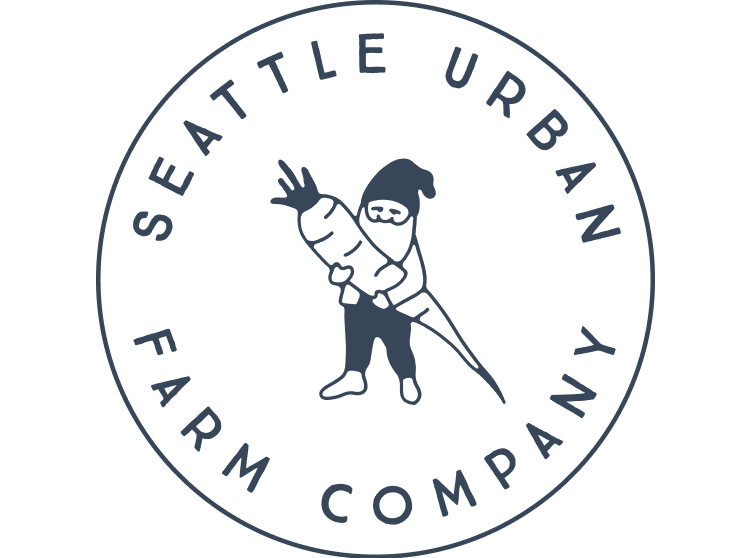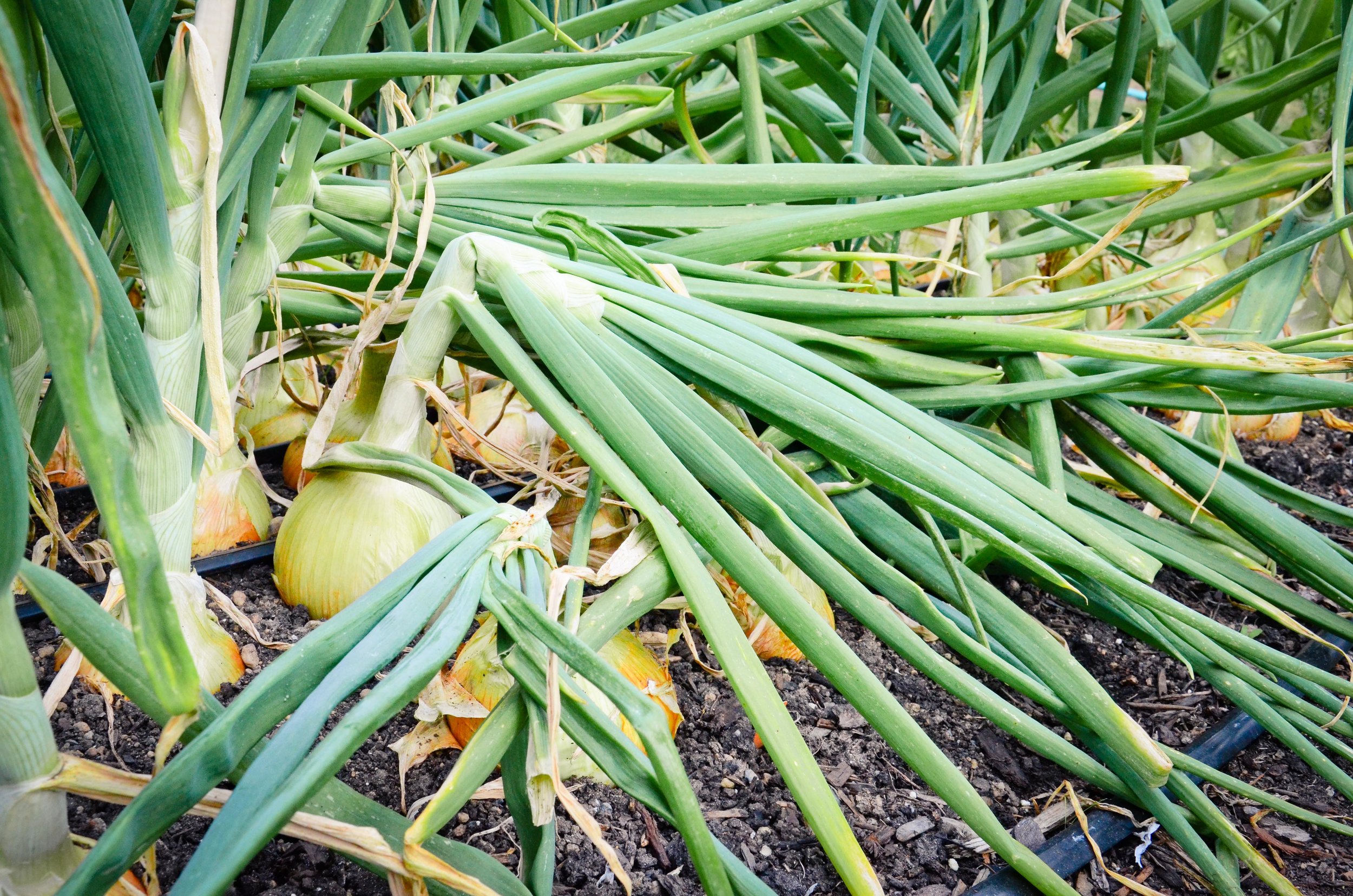Starting your own onion transplants from seed is inexpensive and allows you the most control when it comes to picking varieties that are well suited for your garden and culinary needs.
Read MoreEpisode 55: Harvest and Store Your Onions and Garlic
Garlic and onions are some of the most satisfying crops you can grow in your home garden. Garlic is generally planted in the Fall, and onions are among the first transplants to be tucked into the early spring garden. These crops are both ready to harvest at the onset of peak harvest season, a harbinger of the forthcoming abundance. Luckily the crops are happy to be stored away for us to enjoy during less bounteous times of year. In this episode, we’re sharing some tips that will help you know when your crops are ready to harvest and how to store them.
Read MoreStarting Onions + Leeks from Seed
Onions and leeks are always the first transplants we seed each year at Seattle Urban Farm Co. (SUFCo). Bulbing onions and leeks have a long growing season, so getting them started early allows for them to grow to maturity in the optimal growing conditions of summer. They also cure better and store longer when harvested during dry weather conditions. Many people devote a large part of their gardens to alliums because they so store well and are very easy to use, so another advantage to a summer harvest is that it can also create room for fall crops!
Read MoreHow to Plant Onions
Onions, part of the Allium family, are a long-season crop, taking up to 8 months to mature from seed. We started our onion transplants two months ago, and they wont be ready to harvest until late-July or August. If you haven’t already started onions from seed we highly recommended that you buy transplants from your local nursery.
Read MoreStoring Root Vegetables
If properly managed, storage crops can last through the entire winter and even into the following spring, allowing you to eat from your garden even when you don't feel like going outside in the cold to pick salad greens. Below are the very basic rules for storage of a few different common storage crops, check out our book for more in depth information...
Read MoreOnions & Leeks
I just sowed our first onions and leeks. As with so many great gardening traditions (e.g. planting peas on President’s Day, planting chocolate on Valentine’s Day, or planting hot dogs on the Fourth of July), I figured it would help to start the year's first seeds on a holiday: Martin Luther King Jr. Day. As with all great gardening traditions, I got a late start.
At this point, I am sure that you may be asking yourself something like, “Isn’t mid-January a little early to start vegetable seeds?” or maybe “Why am I reading this blog?”
Well, for now please let me attempt to elucidate a few of the wonderful properties of the onion. It should be noted that, the more unique characteristics a plant has, the higher its rating on the "SUFCo Plant Fantastic Index".
That being said, there are many things that make the humble onion a subject worth exploration: First, we should note that the seeds should be kept in the freezer. These seeds have a shorter shelf life than many other vegetable seeds and will likely only be viable for a year if left in your normal seed storage facility (a dark, dry place with zero gravity and free of drastic temperature fluctuations).
Second, onions can now keep the distinct honor of being the earliest sown seed (at least here in the PNW). For this same reason, many home gardeners are apt to grow their onions from sets rather than seeds. It is obviously difficult to get them sown early enough and to have the space and energy to do so.
There are, however, a few advantages to growing from seed.
One, lower cost: seeds are much less expensive than sets or young plants.
Two, the plants will be less likely to bolt: when grown as a set, the onion has already lived for one season and is thus being grown as a biennial, which means its evolutionary programming will tell it to send up a seed stalk ASAP effectively stopping bulb growth.
Three, you have something besides groundhogs to cheer for during February.
So...we sow our onions and leeks in late January, set under a grow light until early spring and get into the ground as soon as we can.
Because onions and leeks take so long to mature, and they are always necessary, we like to plant as many Alliums as we can:
Chives,
Garlic Chives,
Scallions (which are really just non-bulbed onions),
Green Onions (which are really just onions with very tiny bulbs),
Shallots (which are really just onions with slighty larger bulbs)
Leeks,
Sweet White Onions and,
Yellow Storage Onions.
Also an Allium, but requiring its own personal blog, chauffeur, and penthouse apartment: Garlic.
The last fantastic feature that I will mention is “Allium Day-Length Sensitivity”. Different species and varieties have unique light requirements, but bulb growth in most Alliums is triggered by a change in day length. Some types will not start bulbing until days exceed 12 hours, or 13 or 14 or...These differences make certain types more or less suitable to your region. You would want to grow different varieties in Panama (near the equator) than in Alaska (near a moose). Such distinctions are irrelevant to non-bulbing types (leeks, scallions, etc.).
Mostly, I just think that onions are continuously consumed but rarely considered.
In conclusion, at least I now have something to check up on every morning (besides the weather report).






